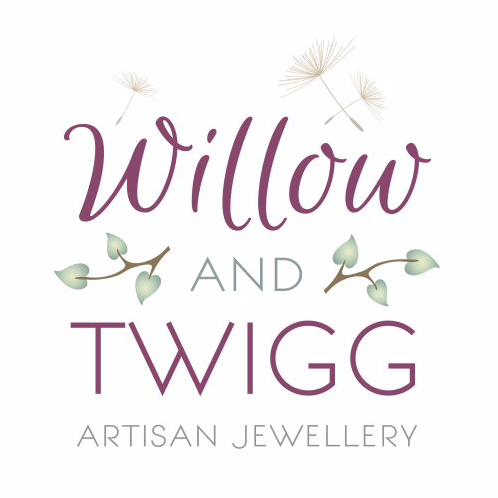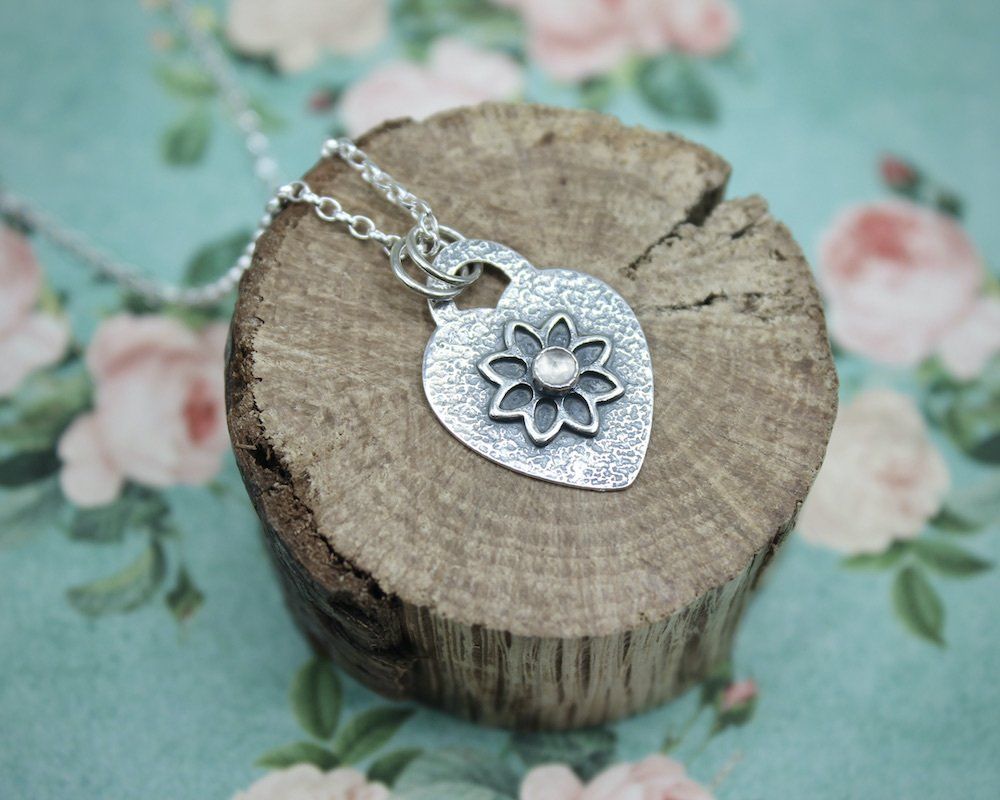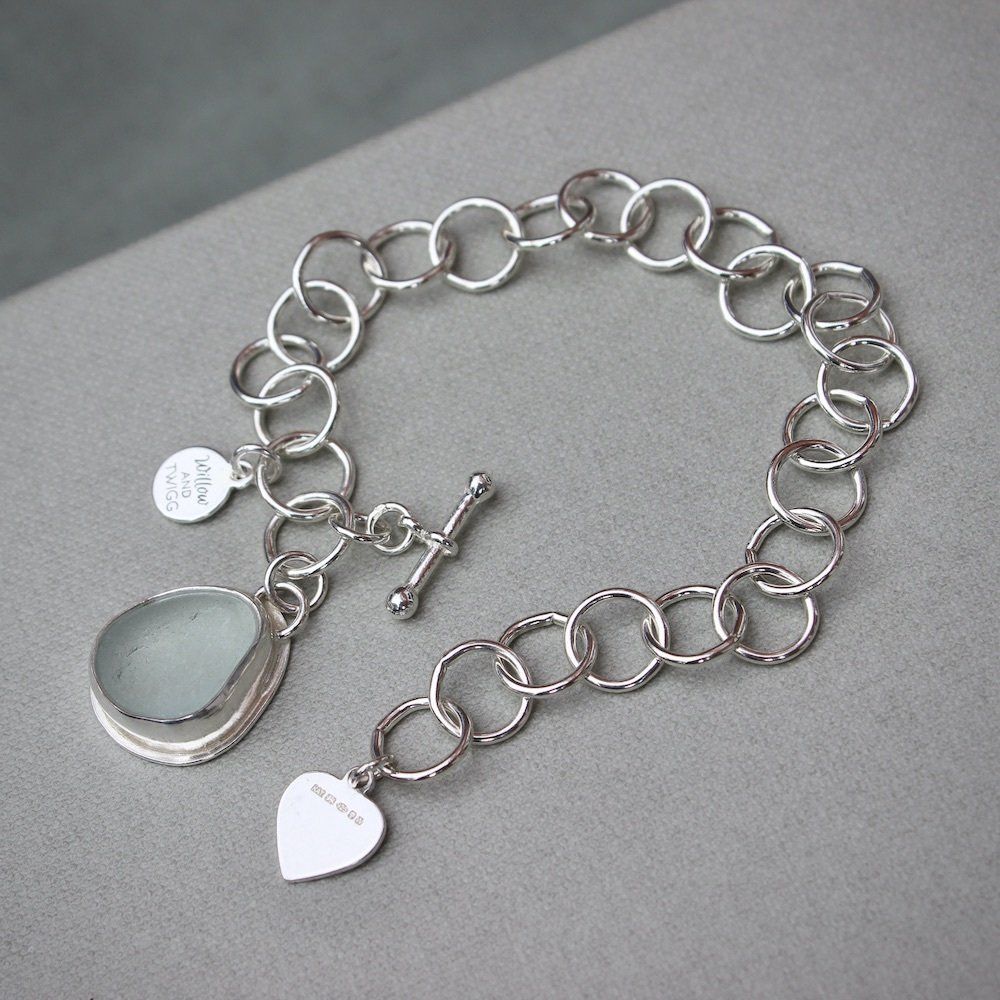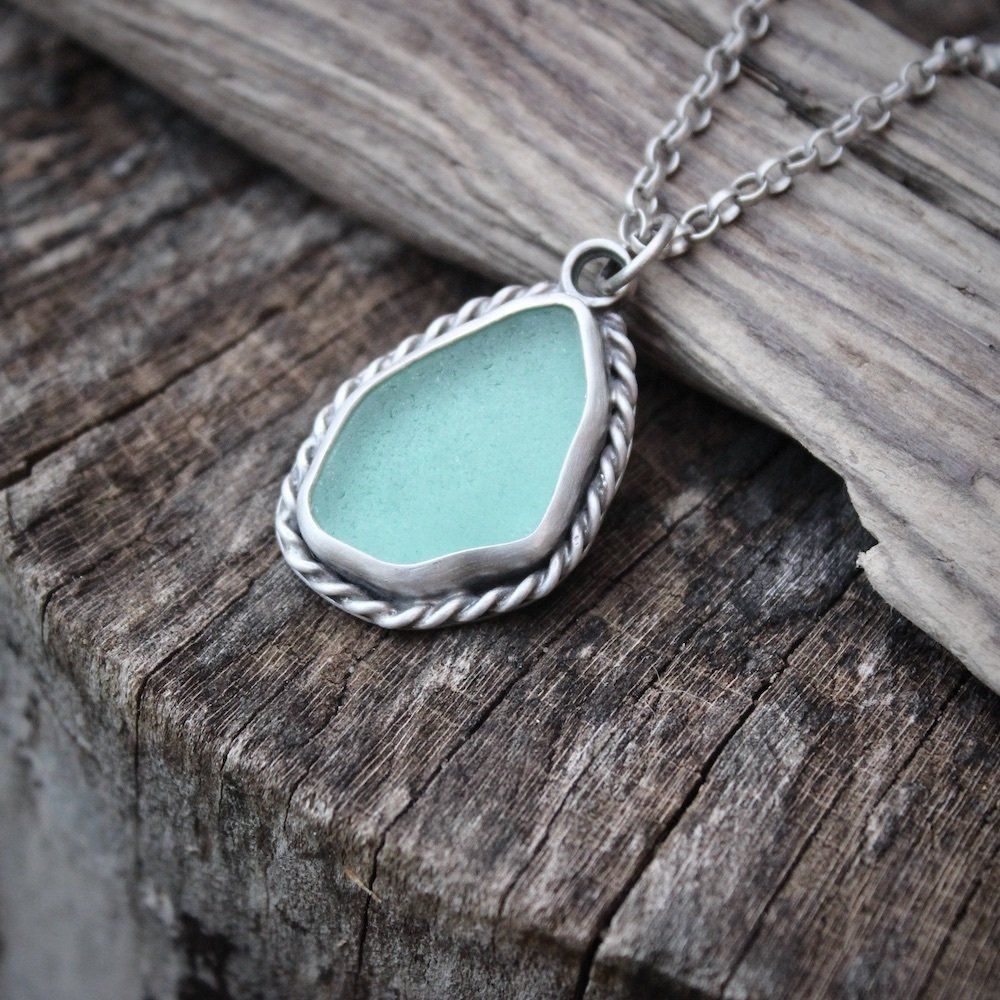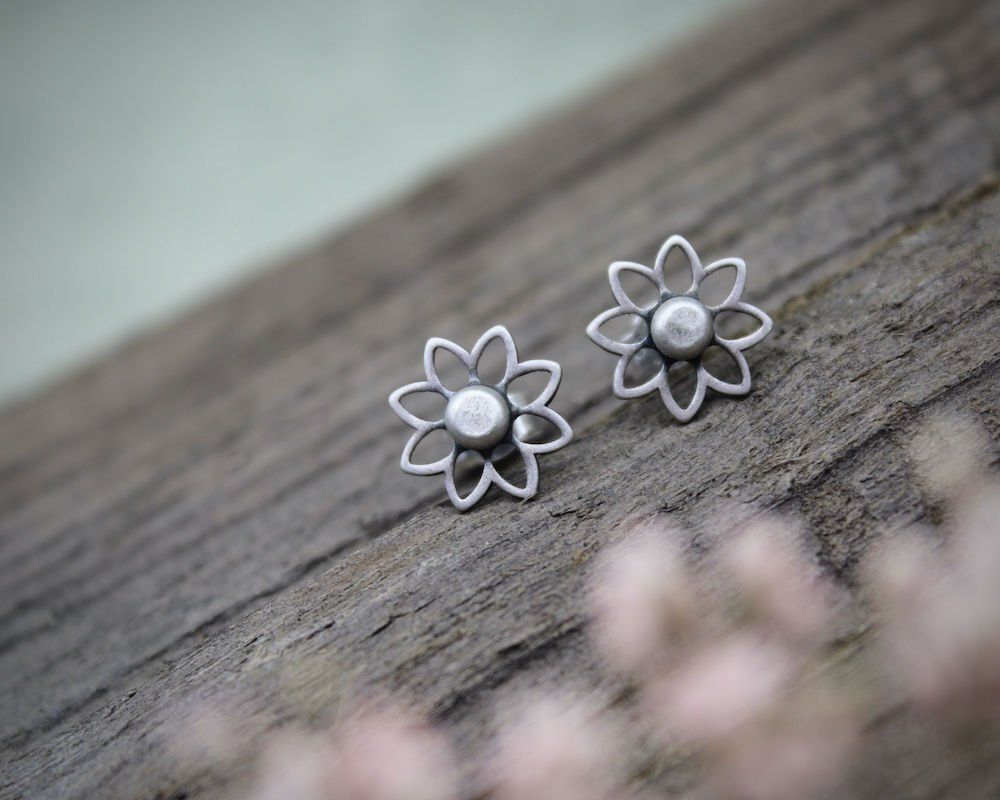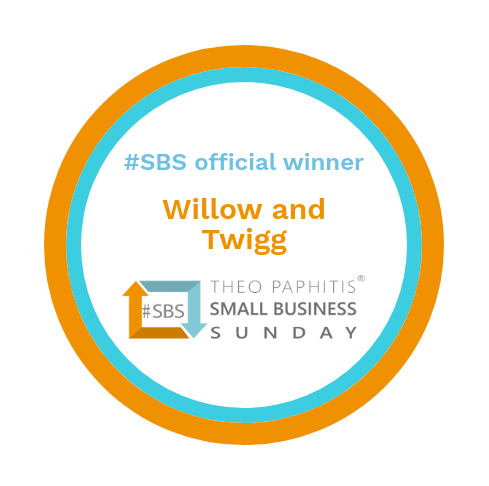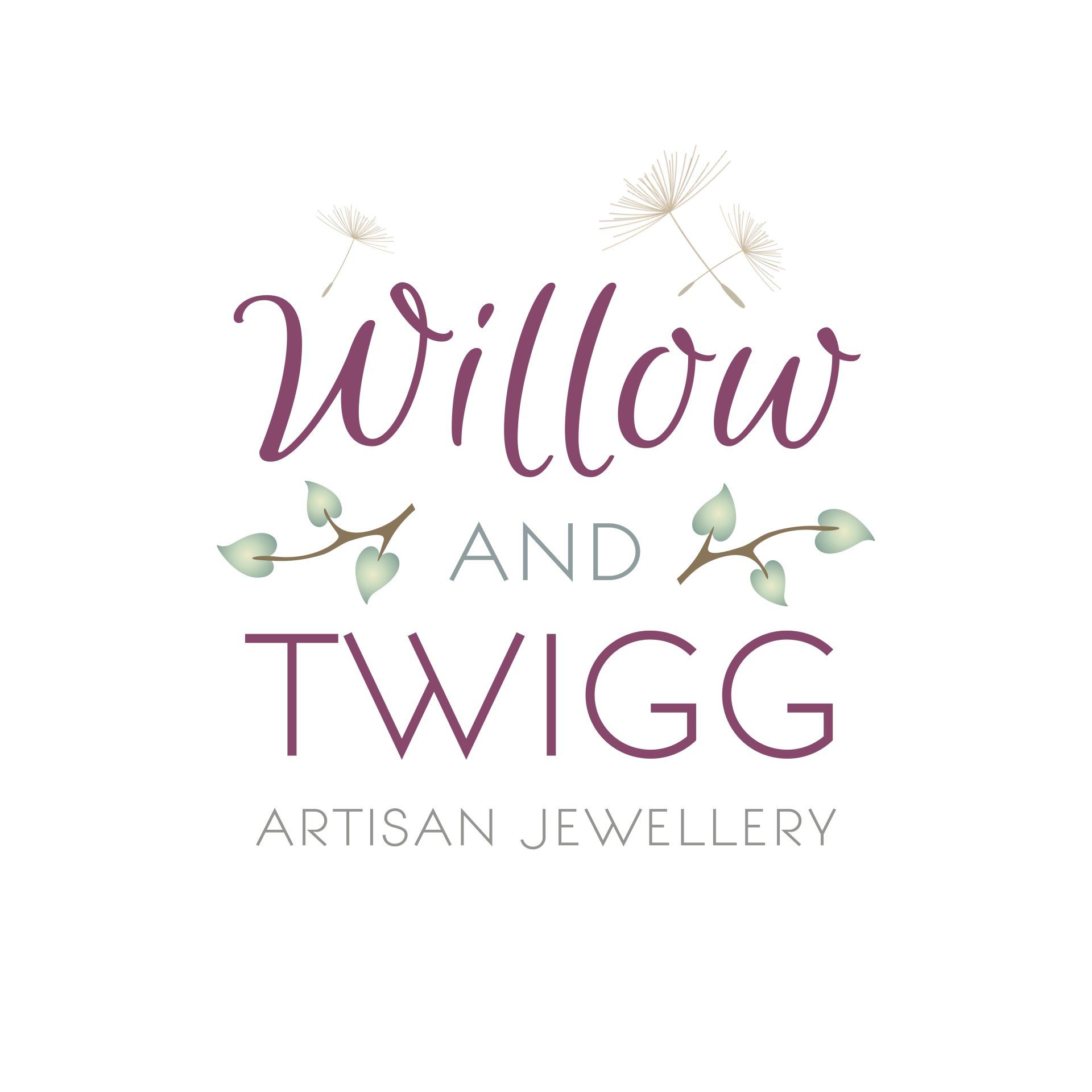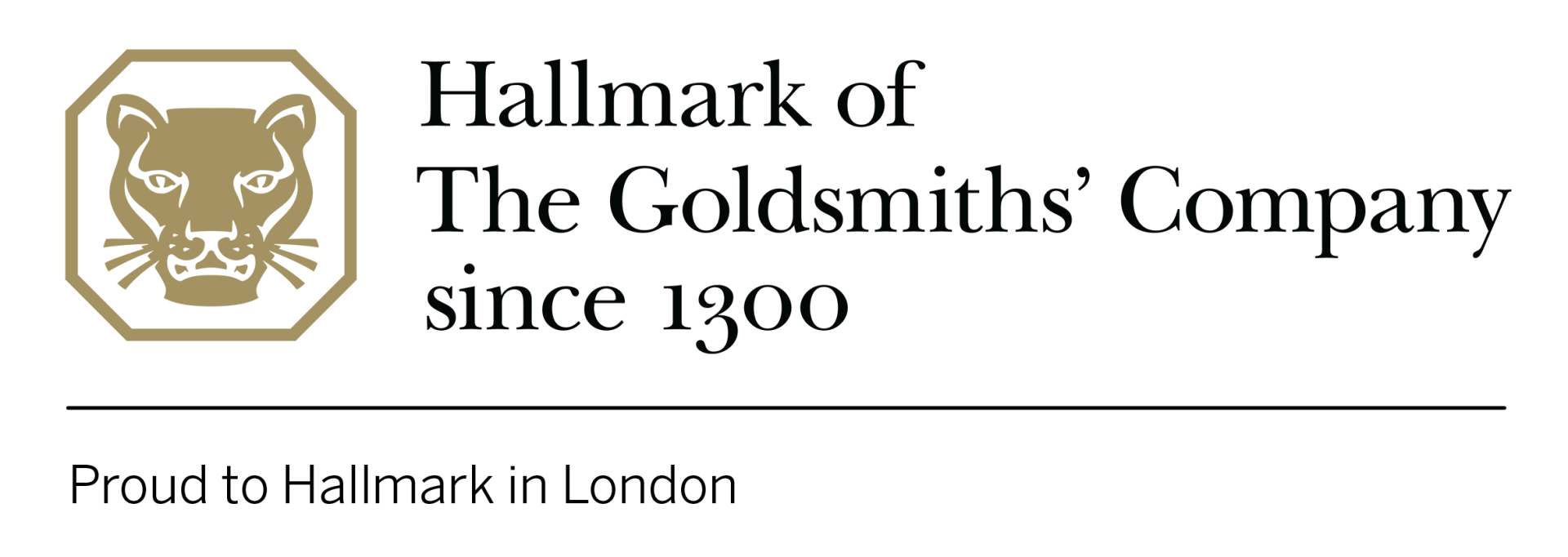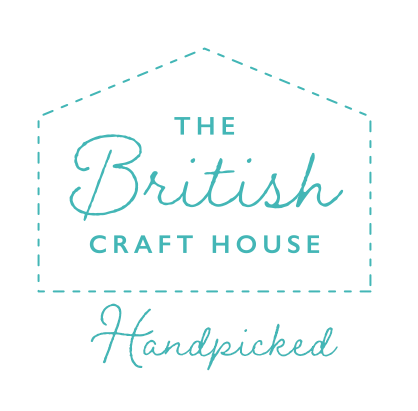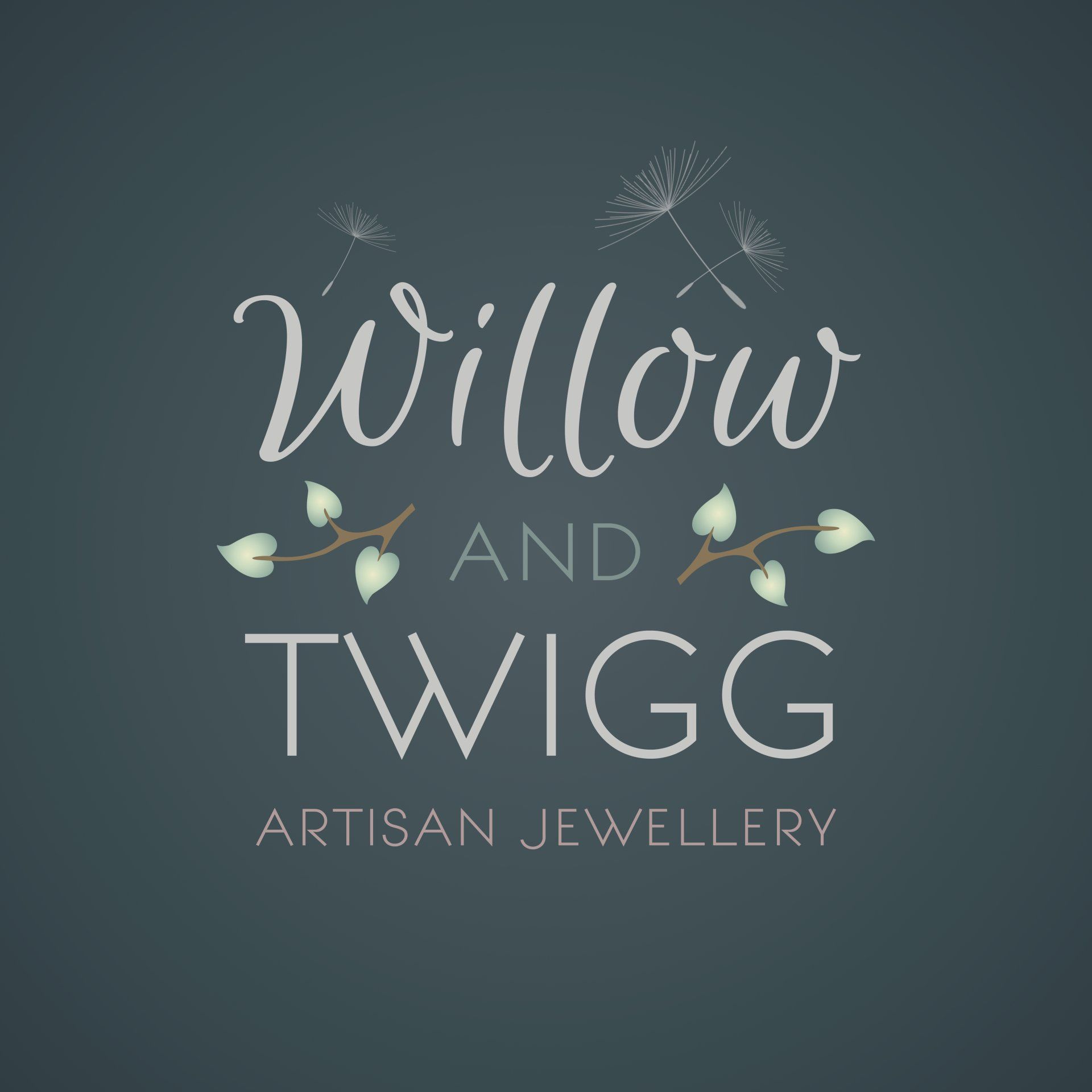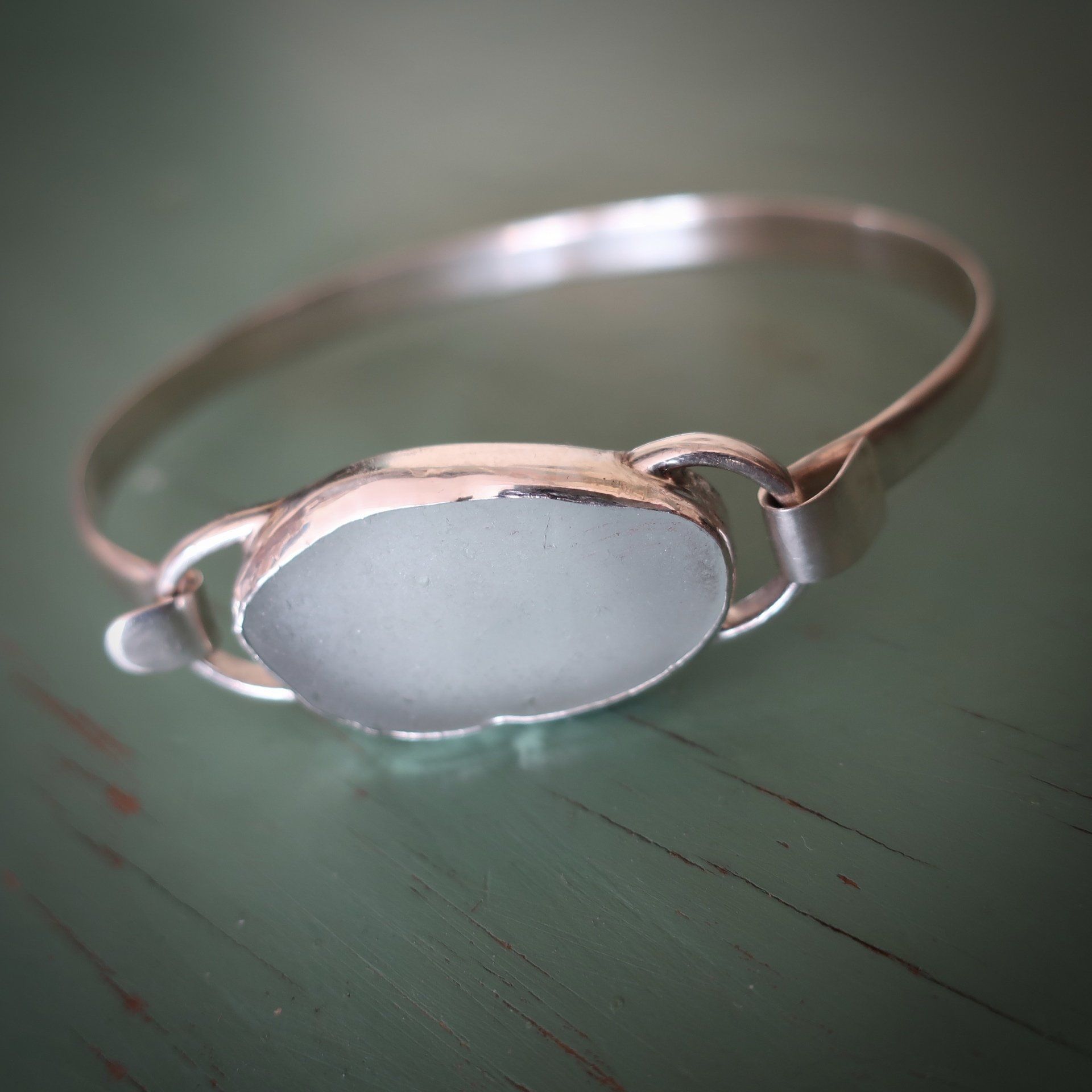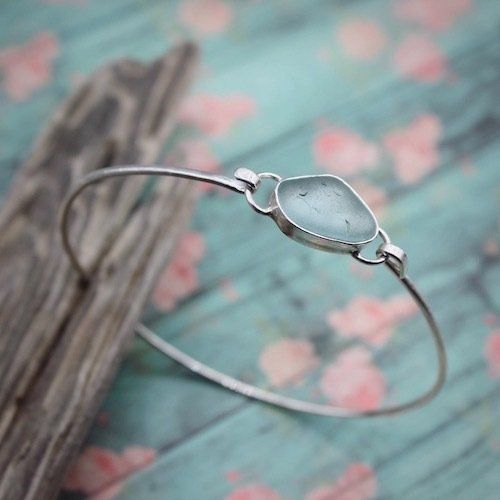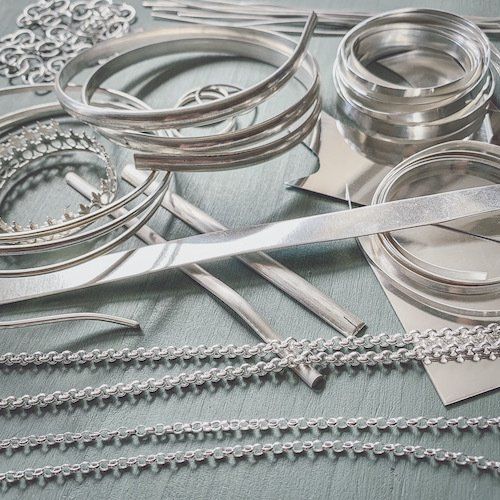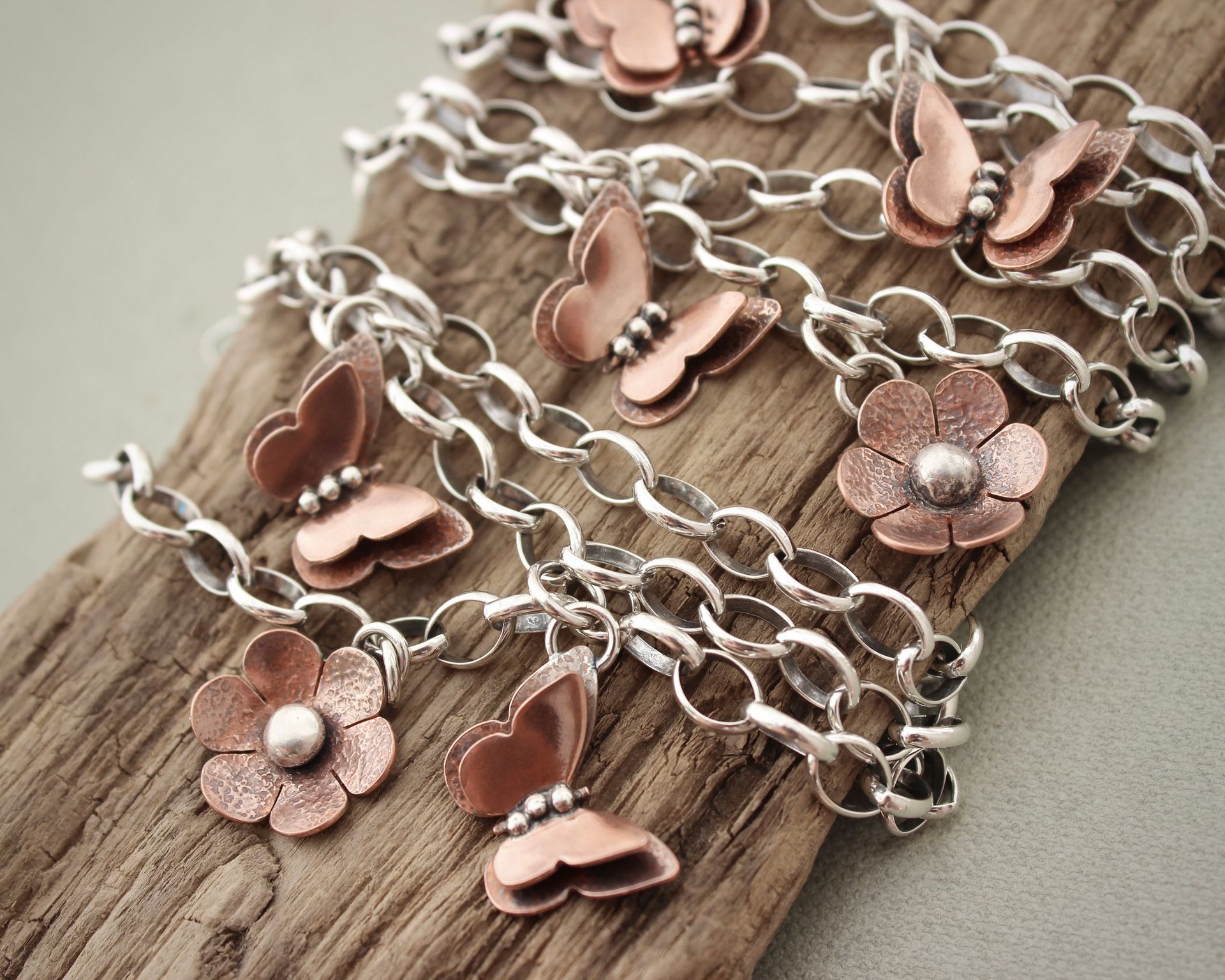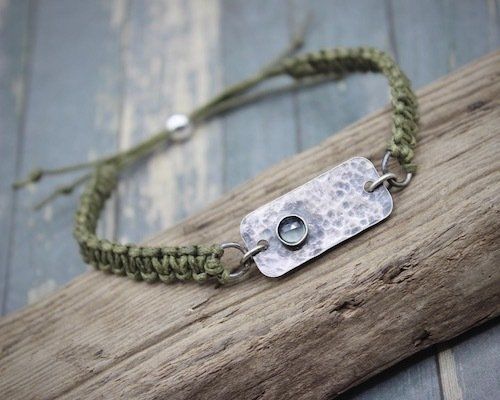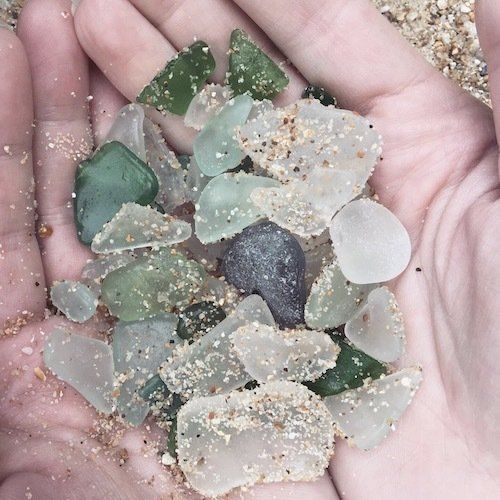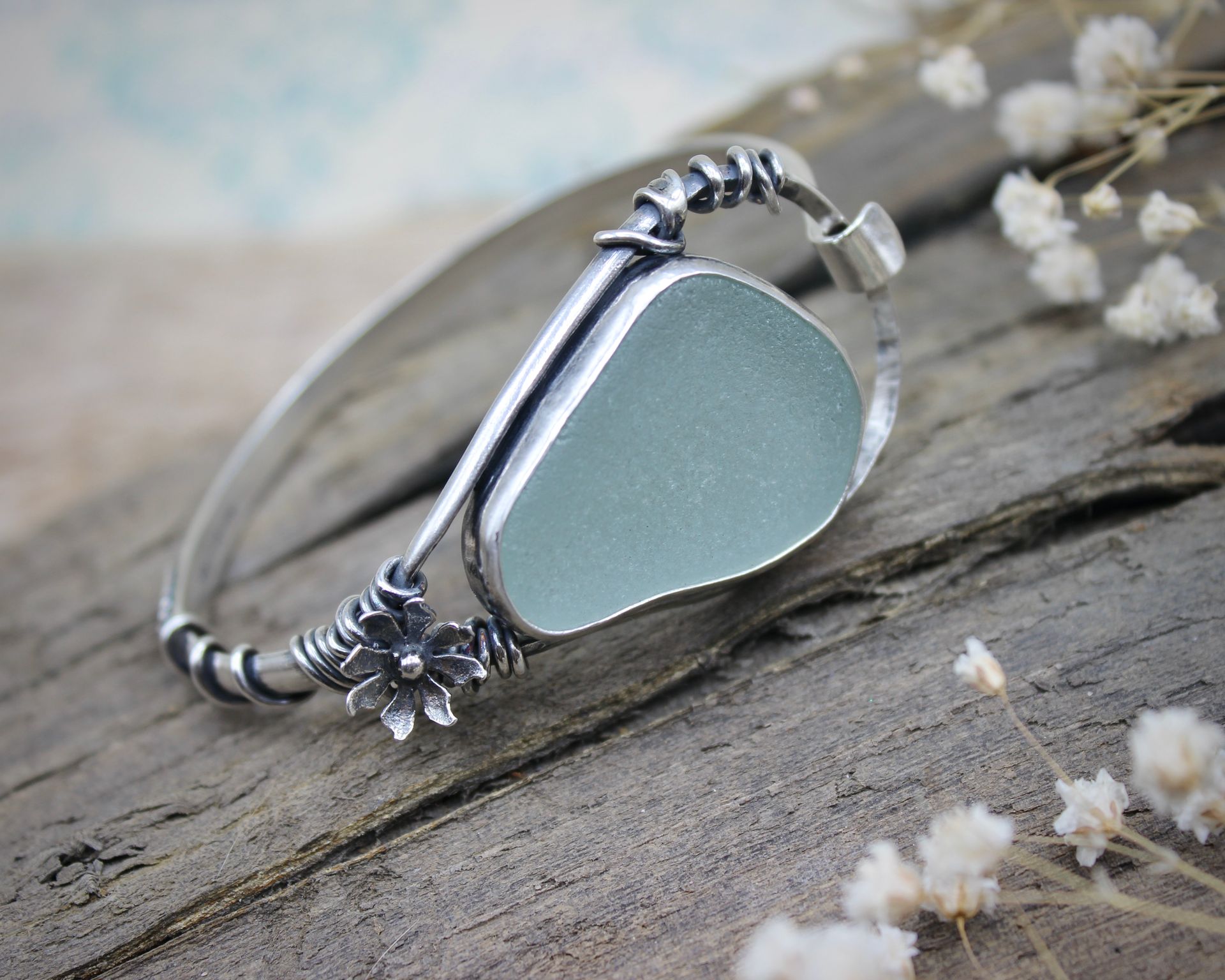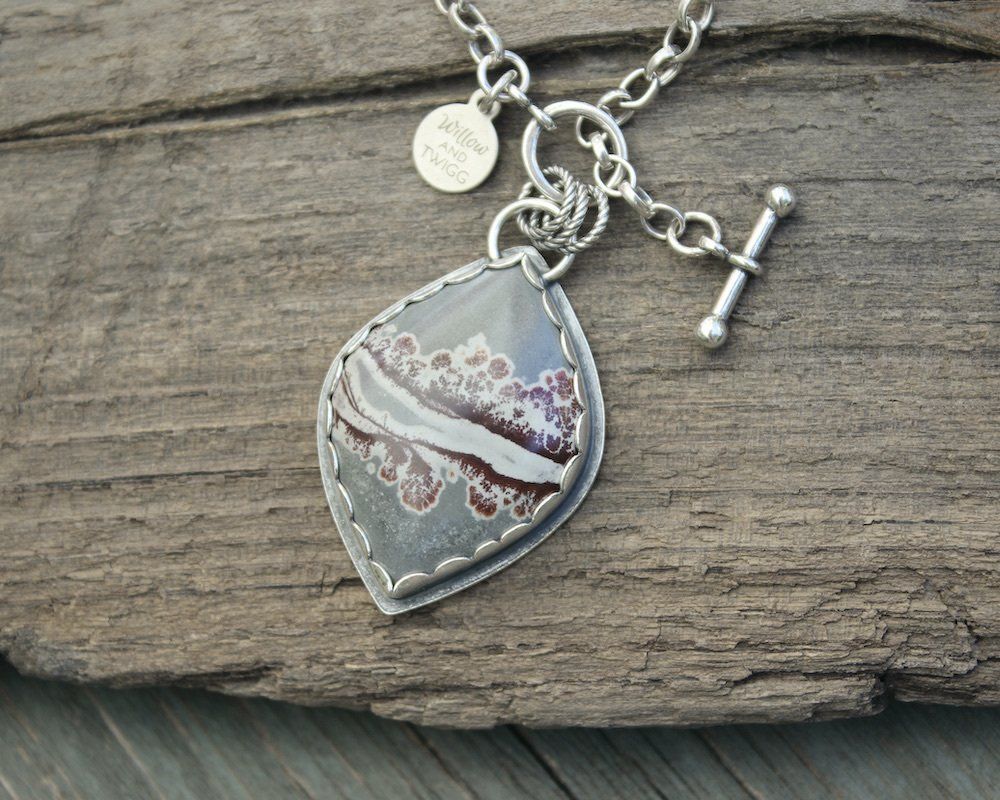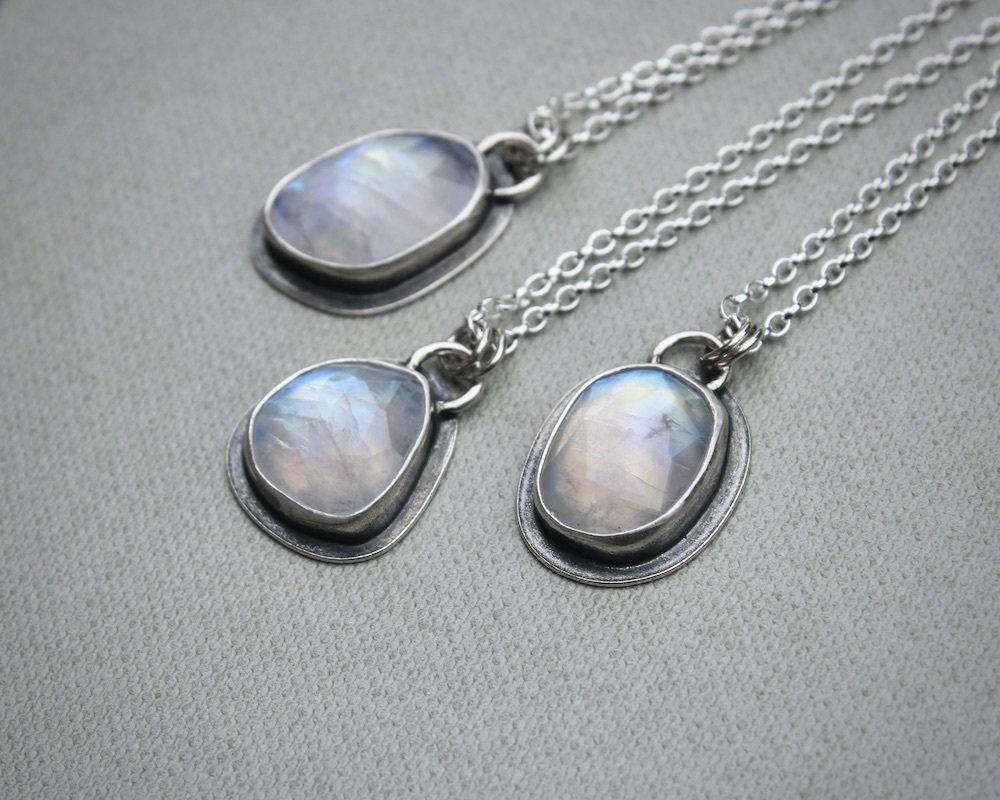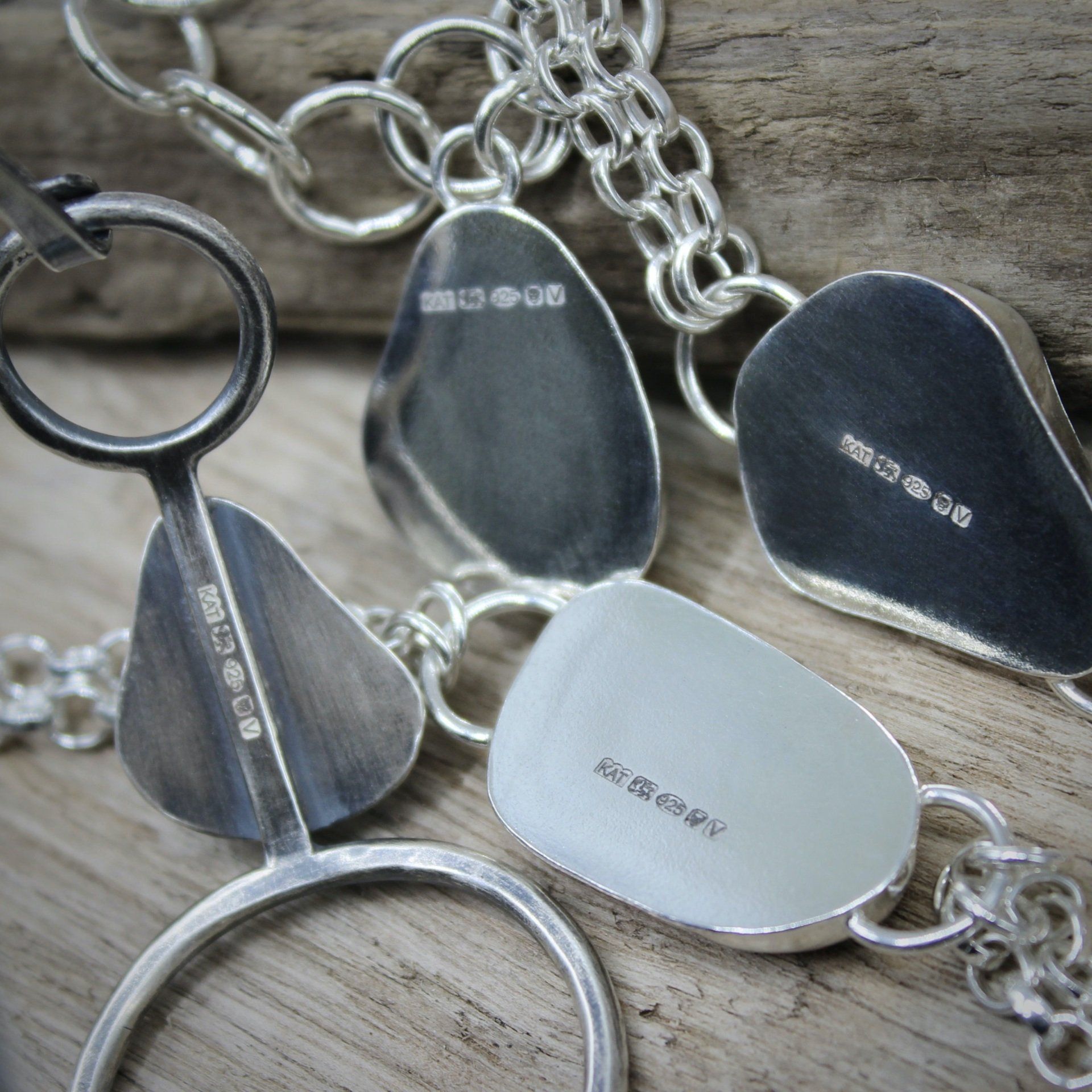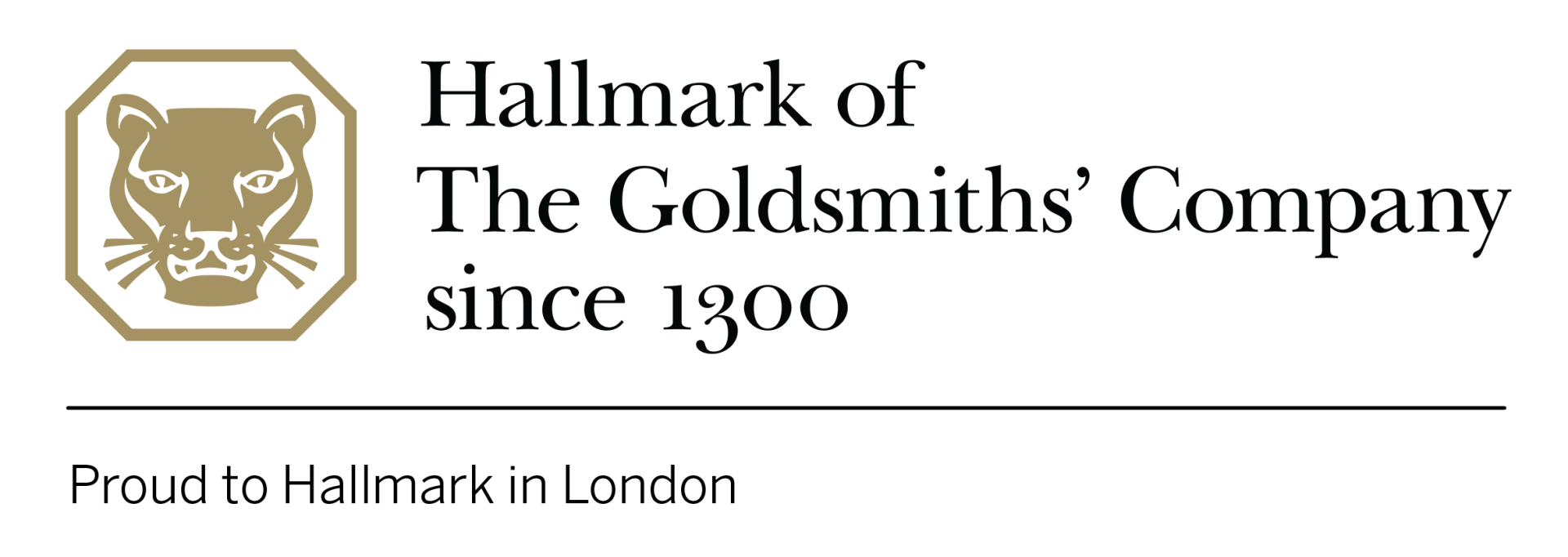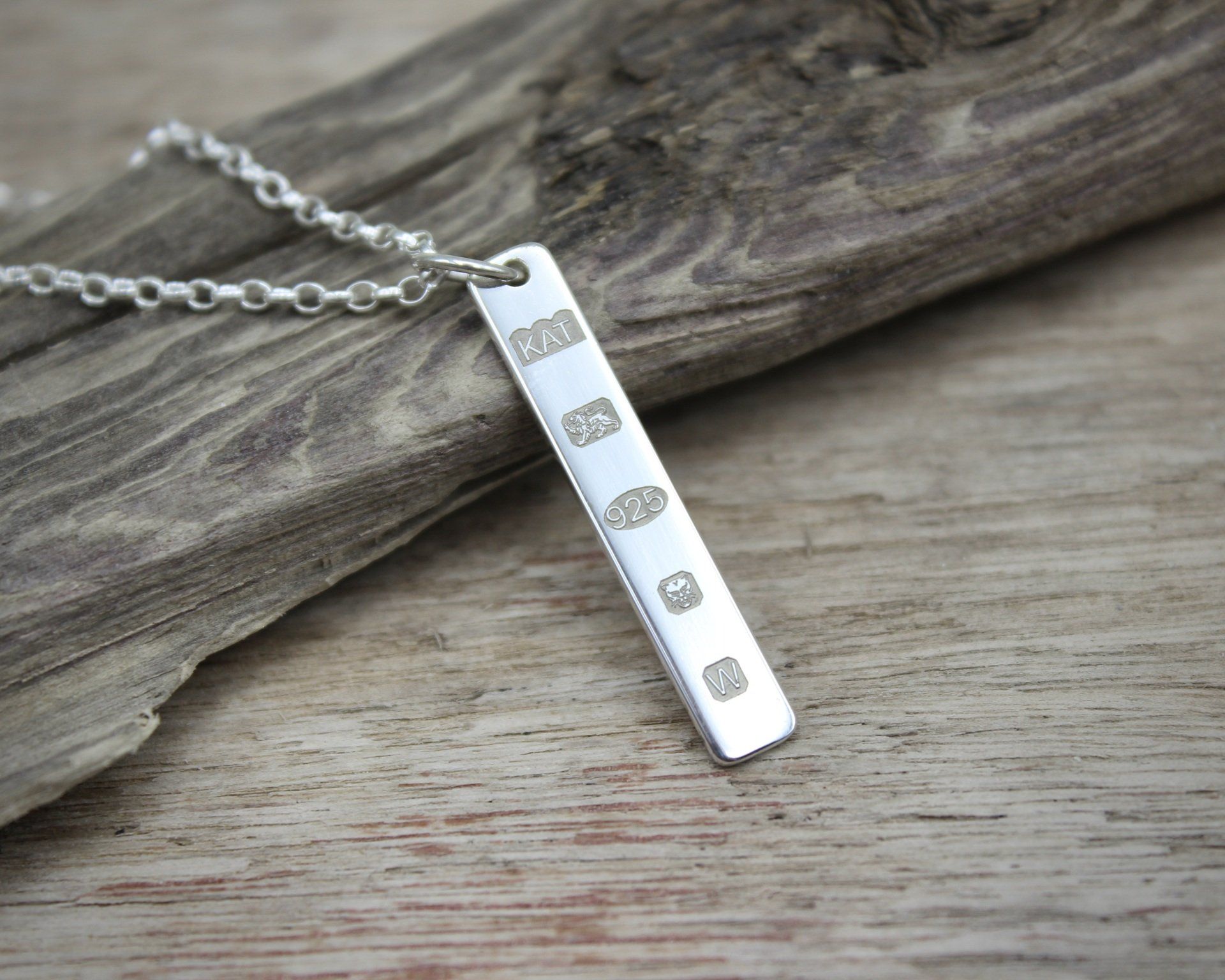SILVER
I work with fine silver, 925 sterling silver, and 935 argentium sterling silver. The latter is a fairly new alloy which is stronger, brighter, and whiter than traditional Sterling Silver and is highly tarnish resistant.
This makes it especially good for setting beneath sea glass where the eventual development of any tarnishing would show through the glass and detract from the piece.
Argentium is also hypoallergenic, making it great for those who have an allergy to traditional sterling silver. The exact metal or combination of metals I use depends on the piece of jewellery being made.
The majority of the silver I use, including all bullion in the form of metal sheet and wire, is now 100% recycled as well as being sustainably sourced.
OTHER MATERIALS
Although I work mainly with silver, I also use other metals in my designs, including copper and brass, which can give a wonderful contrasting effect.
I also sometimes use softer materials such as leather, cotton cord or even wood, plus a variety of other components and beads including cultured pearls, crystals and manufactured glass.
I often like to experiment with different material combinations and will use anything that I think goes together or works with the look I'm trying to achieve.
SEA GLASS
Every piece of sea glass I use in my jewellery is authentic, genuine sea glass - the majority of which has been personally collected by me (and occasionally by my children!) from the pebbly beaches along the Solent in Hampshire, where we live.
Sea glass is broadly defined as glass which has been discarded into the oceans or on beaches, thereafter spending many decades being gently tumbled by the waves.
This gives it the characteristic smooth edges and beautiful frosted appearance which defines it.
Some pieces are considered to be of a 'higher grade' than others due to their size and shape, and some colours are much rarer than others with green and white being more commonly found, and blues and pinks being much harder to come by.
Turquoise, aqua and light green 'sea foam' colours are my own favourites.
Sea glass is also a very tactile material, and usually takes on a completely different translucent shade when wet.
Similarly, the more you handle it, the more translucent it becomes as the natural oils on your hands help work away the frosted coating from the salt water.
Occasionally I will gently coat the glass with oils to maintain or enhance this translucency, other times I leave it just as it was found -apart from a thorough washing!
It makes beautiful, unique jewellery, and is a perfect example of recycling at its most elegant!
SEMI-PRECIOUS STONES
I use a wide variety of semi-precious stones, and am fascinated not just by their appearance but by the meanings attached to them.
Each different type of stone is purported to hold specific holistic healing powers and spiritual properties.
Although I do not necessarily design a piece of jewellery or select the stones I use with these qualities in mind, I do try and include such details in descriptions where I can.
My favourite gemstones include Jasper, Agate and Quartz for their beautiful colours, and stones such as Labradorite, Moonstone and Chalcedony for sparkle and shine.
I also love Aquamarine for its beautiful colours and its alleged affiliations with the sea.
The variety of shades, patterns and banding within semi-precious stones can be stunning as well as unique - no two will ever be exactly the same.
I use the stones in a variety of different ways too, from beads in strung jewellery such as necklaces and bracelets, and as cabochons and pendants when setting in silver.
I obtain my gemstones from a variety of places but usually buy cabochons direct from the lapidaries (stone cutters) themselves. It is important to me that all my materials are ethically sourced as well as being of the highest quality.
HALLMARKING
Precious metals such as silver and gold are rarely used in their purest form but are instead usually alloyed with other metals. This makes them more durable and easier to work with. Sterling silver, for example, usually bears the fineness of 925 - this means it contains 92.5% by weight of pure silver, and 7.5% of another metal alloy, usually copper.
However, it isn't possible to detect an article's precious metal content by sight or touch. Therefore, if an article is described as being made of or containing precious metals, it is a legal requirement in the UK for an Assay Office to hallmark them as such.
Hallmarks are marks applied to precious metals to indicate the amount of pure metal in the alloy. They were traditionally applied by striking with a punch, but are more commonly now applied using lasers.
There are four Assay Offices in the UK, based in London, Birmingham, Sheffield and Edinburgh.
I am registered for hallmarking with The Goldsmiths’ Company Assay Office in London, which began hallmarking in 1327 and is the oldest Assay Office in the UK.
A hallmark is made up of a series of marks which are applied together to articles made from platinum, gold, palladium and silver.
These marks together mean that the article has been independently tested in order to guarantee it conforms to the legal standards of purity or 'fineness'. They also show where the hallmarking was done, what year it was marked, and who the sponsor or 'maker' is.
The first part of any hallmark is the maker or sponsor's mark, which is a series of between two and five letters in a designated 'shield' shape that is unique to each individual.
My own mark contains my initials KAT.
Not all my work will be hallmarked though; only those pieces which contain an amount of silver above a certain weight require a legal hallmark. For silver this is anything over 7.78g. For gold and palladium the value is 1g, and for platinum 0.5g.
Any pieces falling under that level do not require to be hallmarked, although often you will find metals stamped with the number '925' for Sterling Silver. This number alone does not constitute a legal hallmark though, and is no guarantee that the metal is of the purity claimed.
If you would like more information on hallmarking, you can find a copy of the Assay Office's Dealer Notice by clicking on the button below:
SHOP LISTINGS AND ITEM AVAILABILITY
Every item of jewellery I make is handcrafted by me, and made to my own designs. Due to the nature of the materials and techniques used, the majority of pieces can therefore be described as unique and 'one of a kind'. Even if I should replicate a particular design, the resulting items will often be very slightly different in one way or another. This is the advantage of buying handmade from artisans, and is especially true when jewellery features sea glass or other natural materials.
Honesty and accuracy is important to me when selling my work, and as a result of these variations most items I create will be listed for sale individually and photographed as such. If an item is described as being 'one of a kind', then the pictures you see in the shop listings will be of the exact item that will be received if purchased.
If I do create a design that can be more easily replicated then depending on availability of materials I may make and list more than one at a time. This means that the item received from a purchase may not be the exact original shown in the photographic images. However I will only do so if variations are absolutely minimal. In all cases, you are always more than welcome to request additional information or images before making a purchase!
I may also be in a position to undertake bespoke commissions from time to time, so if you have seen something you really like in one of my pictures and wish to have another or a similar item made then please send me a message and I will try my best to help.
